Computer Networks and Internets 6th Edition, (Ebook PDF)
Visit to download the full and correct content document: https://ebookmass.com/product/computer-networks-and-internets-6th-edition-ebook-p df/
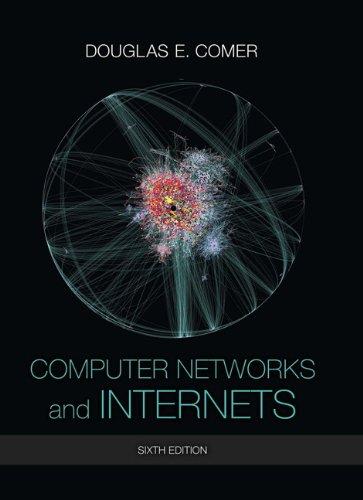
More products digital (pdf, epub, mobi) instant download maybe you interests ...
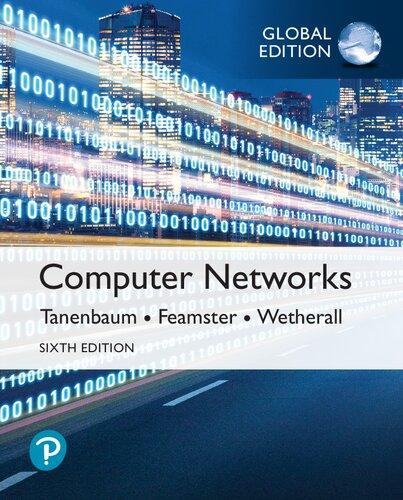
Computer Networks, Global Edition Andrew S. Tanenbaum
https://ebookmass.com/product/computer-networks-global-editionandrew-s-tanenbaum/
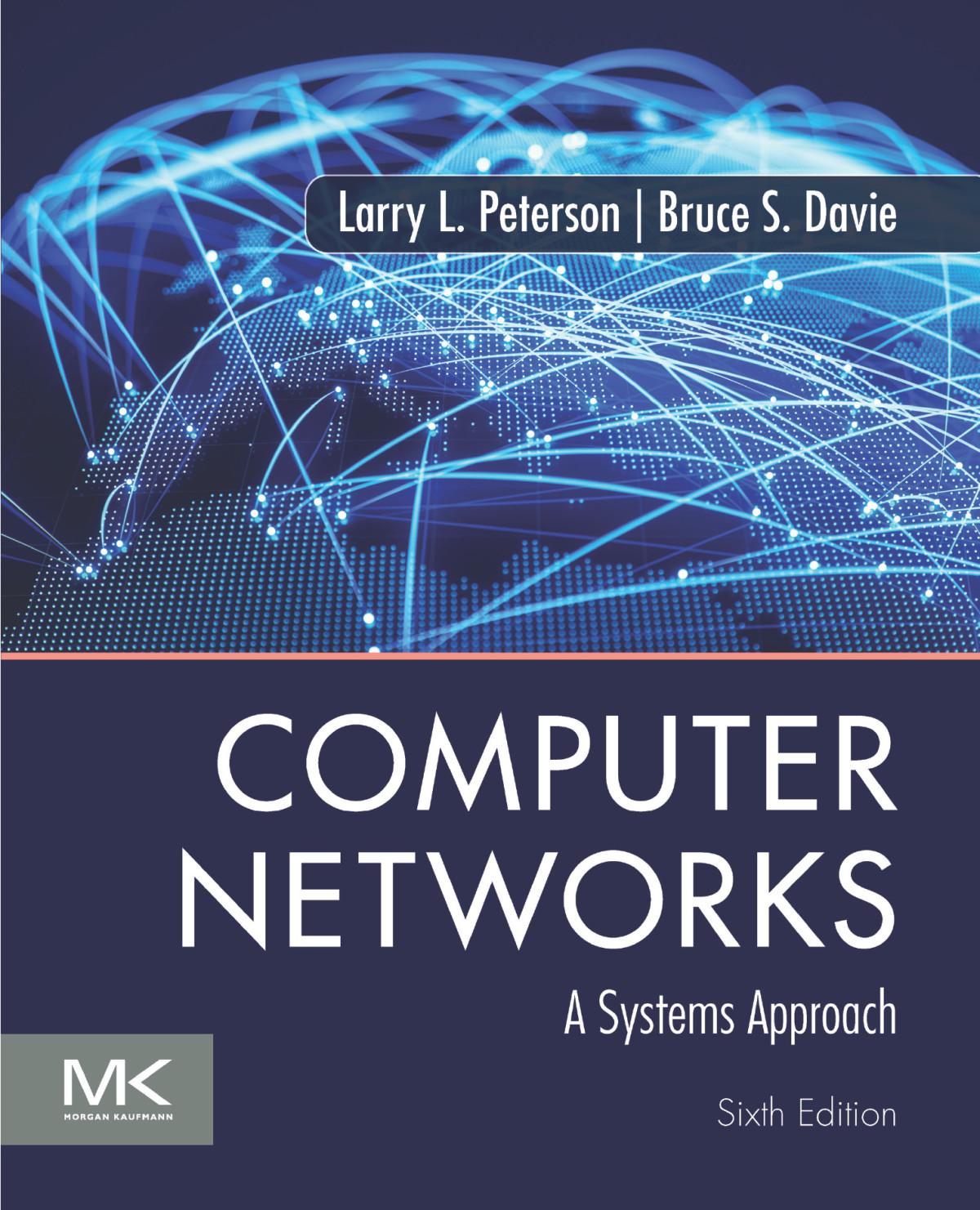
Computer Networks Larry L. Peterson & Bruce S. Davie
https://ebookmass.com/product/computer-networks-larry-l-petersonbruce-s-davie/
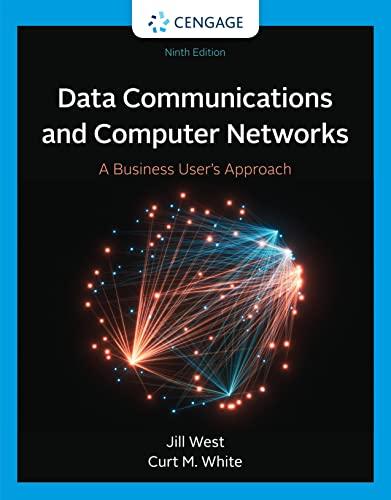
Data Communication and Computer Networks: A Business User's Approach, 9th Edition Jill West
https://ebookmass.com/product/data-communication-and-computernetworks-a-business-users-approach-9th-edition-jill-west/

Computer Networks Larry L. Peterson & Bruce S. Davie
[Peterson
https://ebookmass.com/product/computer-networks-larry-l-petersonbruce-s-davie-peterson/
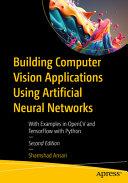
Building Computer Vision Applications Using Artificial Neural Networks, 2nd Edition Shamshad Ansari
https://ebookmass.com/product/building-computer-visionapplications-using-artificial-neural-networks-2nd-editionshamshad-ansari/

Mathematics for Computer Graphics (Undergraduate Topics in Computer Science), 6th Edition 2022 John Vince
https://ebookmass.com/product/mathematics-for-computer-graphicsundergraduate-topics-in-computer-science-6th-edition-2022-johnvince/

Four Internets: Data, Geopolitics, and the Governance of Cyberspace Kieron O'Hara
https://ebookmass.com/product/four-internets-data-geopoliticsand-the-governance-of-cyberspace-kieron-ohara/
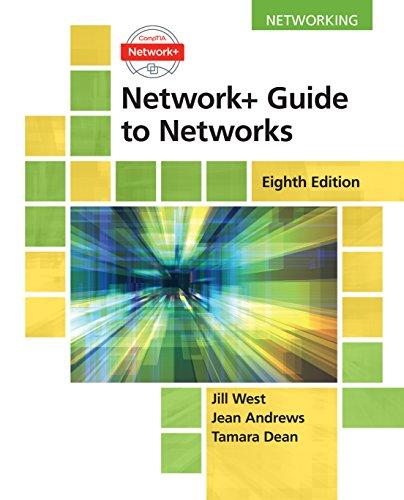
Network+ Guide to Networks 8th Edition, (Ebook PDF)
https://ebookmass.com/product/network-guide-to-networks-8thedition-ebook-pdf/
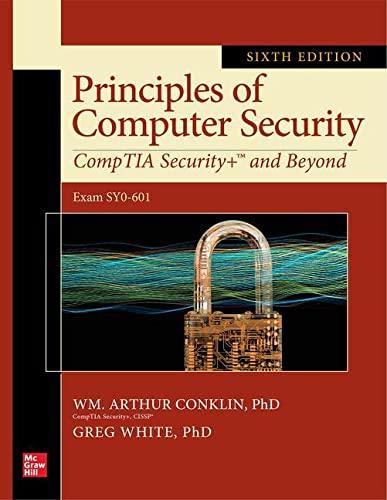
Principles of Computer Security: CompTIA Security+ and Beyond (Exam SY0-601), 6th Edition Greg White
https://ebookmass.com/product/principles-of-computer-securitycomptia-security-and-beyond-exam-sy0-601-6th-edition-greg-white/
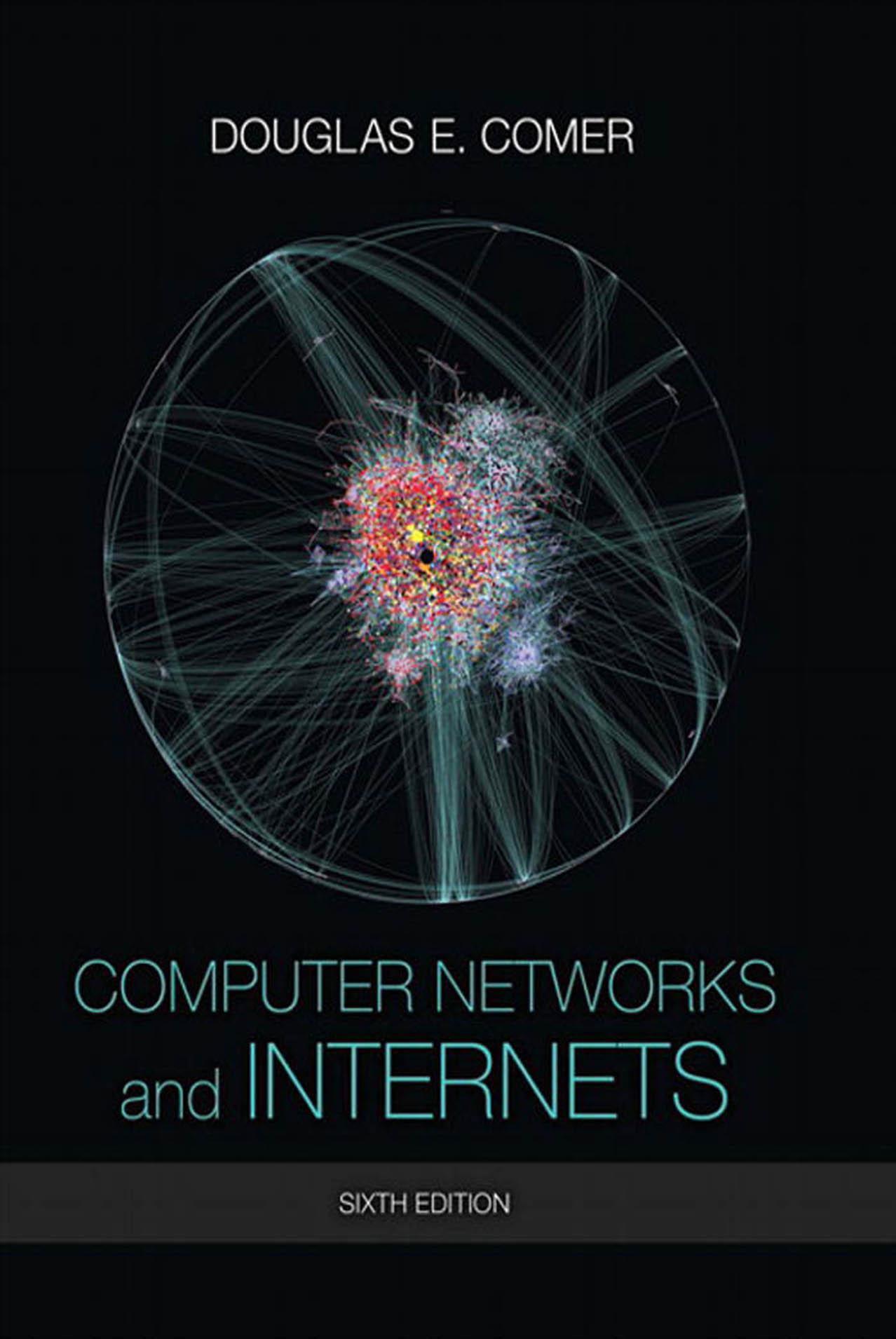
1.1GrowthOfComputerNetworking 1
1.2WhyNetworkingSeemsComplex 2
1.3TheFiveKeyAspectsOfNetworking 2
1.4PublicAndPrivatePartsOfTheInternet 6
1.5Networks,Interoperability,AndStandards 8
1.6ProtocolSuitesAndLayeringModels 9
1.7HowDataPassesThroughLayers 11
1.8HeadersAndLayers 12
1.9ISOAndTheOSISevenLayerReferenceModel 13
1.10RemainderOfTheText 14
1.11Summary 14 17 Chapter2InternetTrends
2.1Introduction 17
2.2ResourceSharing 17
2.3GrowthOfTheInternet 18
2.4FromResourceSharingToCommunication 21
2.5FromTextToMultimedia 21
2.6RecentTrends 22
2.7FromIndividualComputersToCloudComputing 23
2.8Summary 24 27
3.1Introduction 27
3.2TwoBasicInternetCommunicationParadigms 28
3.3Connection-OrientedCommunication 29
3.4TheClient-ServerModelOfInteraction 30
3.5CharacteristicsOfClientsAndServers 31
3.6ServerProgramsAndServer-ClassComputers 31
3.7Requests,Responses,AndDirectionOfDataFlow 32
3.8MultipleClientsAndMultipleServers 32
3.9ServerIdentificationAndDemultiplexing 33
3.10ConcurrentServers 34
3.11CircularDependenciesAmongServers 35
3.12Peer-To-PeerInteractions 35
3.13NetworkProgrammingAndTheSocketAPI 36
3.14Sockets,Descriptors,AndNetworkI/O 36
3.15ParametersAndTheSocketAPI 37
3.16SocketCallsInAClientAndServer 38
3.17SocketFunctionsUsedByBothClientAndServer 38
3.18TheConnectFunctionUsedOnlyByAClient 40
3.19SocketFunctionsUsedOnlyByAServer 40
3.20SocketFunctionsUsedWithTheMessageParadigm 43
3.21OtherSocketFunctions 44
3.22Sockets,Threads,AndInheritance 45
3.23Summary 45
Chapter4TraditionalInternetApplications
4.1Introduction 49
4.2Application-LayerProtocols 49
4.3RepresentationAndTransfer 50
4.4WebProtocols 51
4.5DocumentRepresentationWithHTML 52
4.6UniformResourceLocatorsAndHyperlinks 54
4.7WebDocumentTransferWithHTTP 55
4.8CachingInBrowsers 57
4.9BrowserArchitecture 59
4.10FileTransferProtocol(FTP) 59
4.11FTPCommunicationParadigm 60
4.12ElectronicMail 63
4.13TheSimpleMailTransferProtocol(SMTP) 64
4.14ISPs,MailServers,AndMailAccess 66
4.15MailAccessProtocols(POP,IMAP) 67
4.16EmailRepresentationStandards(RFC2822,MIME) 67
4.17DomainNameSystem(DNS) 69
4.18DomainNamesThatBeginWithAServiceName 71
4.19TheDNSHierarchyAndServerModel 72
4.20NameResolution 72
4.21CachingInDNSServers 74
4.22TypesOfDNSEntries 75
4.23AliasesAndCNAMEResourceRecords 76
4.24AbbreviationsAndTheDNS 76
4.25InternationalizedDomainNames 77
4.26ExtensibleRepresentations(XML) 78
4.27Summary 79
PARTIIDataCommunicationBasics
Chapter5OverviewOfDataCommunications
5.1Introduction 85
5.2TheEssenceOfDataCommunications 86
5.3MotivationAndScopeOfTheSubject 87
5.4TheConceptualPiecesOfACommunicationsSystem 87
5.5TheSubtopicsOfDataCommunications 90
5.6Summary 91
Chapter6InformationSourcesAndSignals
6.1Introduction 93
6.2InformationSources 93
6.3AnalogAndDigitalSignals 94
6.4PeriodicAndAperiodicSignals 94
6.5SineWavesAndSignalCharacteristics 95
6.6CompositeSignals 97
6.7TheImportanceOfCompositeSignalsAndSineFunctions 97
6.8TimeAndFrequencyDomainRepresentations 98
6.9BandwidthOfAnAnalogSignal 99
6.10DigitalSignalsAndSignalLevels 100
6.11BaudAndBitsPerSecond 101
6.12ConvertingADigitalSignalToAnalog 102
6.13TheBandwidthOfADigitalSignal 103
6.14SynchronizationAndAgreementAboutSignals 103
6.15LineCoding 104
6.16ManchesterEncodingUsedInComputerNetworks 106
6.17ConvertingAnAnalogSignalToDigital 107
6.18TheNyquistTheoremAndSamplingRate 108
6.19NyquistTheoremAndTelephoneSystemTransmission 108
6.20NonlinearEncoding 109
6.21EncodingAndDataCompression 109
6.22Summary 110
Chapter7TransmissionMedia
7.1Introduction 113
7.2GuidedAndUnguidedTransmission 113
7.3ATaxonomyByFormsOfEnergy 114
7.4BackgroundRadiationAndElectricalNoise 115
7.5TwistedPairCopperWiring 115
7.6Shielding:CoaxialCableAndShieldedTwistedPair 117
7.7CategoriesOfTwistedPairCable 118
7.8MediaUsingLightEnergyAndOpticalFibers 119
7.9TypesOfFiberAndLightTransmission 120
7.10OpticalFiberComparedToCopperWiring 121
7.11InfraredCommunicationTechnologies 122
7.12Point-To-PointLaserCommunication 122
7.13Electromagnetic(Radio)Communication 123
7.14SignalPropagation 124
7.15TypesOfSatellites 125
7.16GeostationaryEarthOrbit(GEO)Satellites 126
7.17GEOCoverageOfTheEarth 127
7.18LowEarthOrbit(LEO)SatellitesAndClusters 128
7.19TradeoffsAmongMediaTypes 128
7.20MeasuringTransmissionMedia 129
7.21TheEffectOfNoiseOnCommunication 129
7.22TheSignificanceOfChannelCapacity 130
Chapter8ReliabilityAndChannelCoding
7.23Summary 131 135
8.1Introduction 135
8.2TheThreeMainSourcesOfTransmissionErrors 135
8.3EffectOfTransmissionErrorsOnData 136
8.4TwoStrategiesForHandlingChannelErrors 137
8.5BlockAndConvolutionalErrorCodes 138
8.6AnExampleBlockErrorCode:SingleParityChecking 139
8.7TheMathematicsOfBlockErrorCodesAnd(n,k)Notation 140
8.8HammingDistance:AMeasureOfACode’sStrength 140
8.9TheHammingDistanceAmongStringsInACodebook 141
8.10TheTradeoffBetweenErrorDetectionAndOverhead 142
8.11ErrorCorrectionWithRowAndColumn(RAC)Parity 142
8.12The16-BitChecksumUsedInTheInternet 144
8.13CyclicRedundancyCodes(CRCs) 145
8.14AnEfficientHardwareImplementationOfCRC 148
8.15AutomaticRepeatRequest(ARQ)Mechanisms 148
8.16Summary 149
Chapter9TransmissionModes
9.1Introduction 153
9.2ATaxonomyOfTransmissionModes 153
9.3ParallelTransmission 154
9.4SerialTransmission 155
9.5TransmissionOrder:BitsAndBytes 156
9.6TimingOfSerialTransmission 156
9.7AsynchronousTransmission 157
9.8RS-232AsynchronousCharacterTransmission 157
9.9SynchronousTransmission 158
9.10Bytes,Blocks,AndFrames 159
9.11IsochronousTransmission 160
9.12Simplex,Half-Duplex,AndFull-DuplexTransmission 160
9.13DCEAndDTEEquipment 162
9.14Summary 162
Chapter10ModulationAndModems
10.1Introduction 165
10.2Carriers,Frequency,AndPropagation 165
10.3AnalogModulationSchemes 166
10.4AmplitudeModulation 166
10.5FrequencyModulation 167
10.6PhaseShiftModulation 168
10.7AmplitudeModulationAndShannon’sTheorem 168
10.8Modulation,DigitalInput,AndShiftKeying 168
10.9PhaseShiftKeying 169
10.10PhaseShiftAndAConstellationDiagram 171
10.11QuadratureAmplitudeModulation 173
10.12ModemHardwareForModulationAndDemodulation 174
10.13OpticalAndRadioFrequencyModems 174
10.14DialupModems 175
10.15QAMAppliedToDialup 175
10.16V.32AndV.32bisDialupModems 176
10.17Summary 177
Chapter11MultiplexingAndDemultiplexing(Channelization)
11.1Introduction 181
11.2TheConceptOfMultiplexing 181
11.3TheBasicTypesOfMultiplexing 182
11.4FrequencyDivisionMultiplexing(FDM) 183
11.5UsingARangeOfFrequenciesPerChannel 185
11.6HierarchicalFDM 186
11.7WavelengthDivisionMultiplexing(WDM) 187
11.8TimeDivisionMultiplexing(TDM) 187
11.9SynchronousTDM 188
11.10FramingUsedInTheTelephoneSystemVersionOfTDM 189
11.11HierarchicalTDM 190
11.12TheProblemWithSynchronousTDM:UnfilledSlots 190
11.13StatisticalTDM 191
11.14InverseMultiplexing 192
11.15CodeDivisionMultiplexing 193
11.16Summary 195
Chapter12AccessAndInterconnectionTechnologies
12.1Introduction 199
12.2InternetAccessTechnology:UpstreamAndDownstream 199
12.3NarrowbandAndBroadbandAccessTechnologies 200
12.4TheLocalLoopAndISDN 202
12.5DigitalSubscriberLine(DSL)Technologies 202
12.6LocalLoopCharacteristicsAndAdaptation 203
12.7TheDataRateOfADSL 204
12.8ADSLInstallationAndSplitters 205
12.9CableModemTechnologies 205
12.10TheDataRateOfCableModems 206
12.11CableModemInstallation 206
12.12HybridFiberCoax 207
12.13AccessTechnologiesThatEmployOpticalFiber 208
12.14Head-EndAndTail-EndModemTerminology 208
12.15WirelessAccessTechnologies 209
12.16High-CapacityConnectionsAtTheInternetCore 209
12.17CircuitTermination,DSU/CSU,AndNIU 210
12.18TelephoneStandardsForDigitalCircuits 211
12.19DSTerminologyAndDataRates 212
12.20HighestCapacityCircuits(STSStandards) 212
12.21OpticalCarrierStandards 213
12.22TheCSuffix 213
12.23SynchronousOpticalNetwork(SONET) 214
12.24Summary 215
PARTIIIPacketSwitchingAndNetworkTechnologies
Chapter13LocalAreaNetworks:Packets,Frames,AndTopologies
13.1Introduction 219
13.2CircuitSwitchingAndAnalogCommunication 220
13.3PacketSwitching 221
13.4LocalAndWideAreaPacketNetworks 222
13.5StandardsForPacketFormatAndIdentification 223
13.6IEEE802ModelAndStandards 224
13.7Point-To-PointAndMulti-AccessNetworks 225
13.8LANTopologies 227
13.9PacketIdentification,Demultiplexing,MACAddresses 229
13.10Unicast,Broadcast,AndMulticastAddresses 230
13.11Broadcast,Multicast,AndEfficientMulti-PointDelivery 231
13.12FramesAndFraming 232
13.13ByteAndBitStuffing 233
13.14Summary 234
Chapter14TheIEEEMACSublayer
14.1Introduction 239
14.2ATaxonomyOfMechanismsForSharedAccess 239
14.3StaticAndDynamicChannelAllocation 240
14.4ChannelizationProtocols 241
14.5ControlledAccessProtocols 242
14.6RandomAccessProtocols 244
14.7Summary 250
Chapter15WiredLANTechnology(EthernetAnd802.3)
15.1Introduction 253
15.2TheVenerableEthernet 253
15.3EthernetFrameFormat 254
15.4EthernetFrameTypeFieldAndDemultiplexing 254
15.5IEEE’sVersionOfEthernet(802.3) 255
15.6LANConnectionsAndNetworkInterfaceCards 256
15.7EthernetEvolutionAndThicknetWiring 256
15.8ThinnetEthernetWiring 257
15.9TwistedPairEthernetWiringAndHubs 258
15.10PhysicalAndLogicalEthernetTopology 259
15.11WiringInAnOfficeBuilding 259
219
15.12EthernetDataRatesAndCableTypes 261
15.13TwistedPairConnectorsAndCables 261
15.14Summary 262
Chapter16WirelessNetworkingTechnologies
16.1Introduction 265
16.2ATaxonomyOfWirelessNetworks 265
16.3PersonalAreaNetworks(PANs) 266
16.4ISMWirelessBandsUsedByLANsAndPANs 267
16.5WirelessLANTechnologiesAndWi-Fi 267
16.6SpreadSpectrumTechniques 268
16.7OtherWirelessLANStandards 269
16.8WirelessLANArchitecture 270
16.9Overlap,Association,And802.11FrameFormat 271
16.10CoordinationAmongAccessPoints 272
16.11ContentionAndContention-FreeAccess 272
16.12WirelessMANTechnologyAndWiMax 274
16.13PANTechnologiesAndStandards 276
16.14OtherShort-DistanceCommunicationTechnologies 277
16.15WirelessWANTechnologies 278
16.16MicroCells 280
16.17CellClustersAndFrequencyReuse 280
16.18GenerationsOfCellularTechnologies 282
16.19VSATSatelliteTechnology 284
16.20GPSSatellites 285
16.21SoftwareDefinedRadioAndTheFutureOfWireless 286 16.22Summary 287
Chapter17Repeaters,Bridges,AndSwitches
17.1Introduction 291
17.2DistanceLimitationAndLANDesign 291
17.3FiberModemExtensions 292
17.4Repeaters 293
17.5BridgesAndBridging 293
17.6LearningBridgesAndFrameFiltering 294
17.7WhyBridgingWorksWell 295
17.8DistributedSpanningTree 296
17.9SwitchingAndLayer2Switches 297
17.10VLANSwitches 299
17.11MultipleSwitchesAndSharedVLANs 300
17.12TheImportanceOfBridging 301
17.13Summary 302
Chapter18WANTechnologiesAndDynamicRouting
18.1Introduction 305
18.2LargeSpansAndWideAreaNetworks 305
18.3TraditionalWANArchitecture 306
18.4FormingAWAN 308
18.5StoreAndForwardParadigm 309
18.6AddressingInAWAN 309
18.7Next-HopForwarding 310
18.8SourceIndependence 313
18.9DynamicRoutingUpdatesInAWAN 313
18.10DefaultRoutes 314
18.11ForwardingTableComputation 315
18.12DistributedRouteComputation 316
18.13ShortestPathsAndWeights 320
18.14RoutingProblems 321
18.15Summary 322
19.1Introduction 325
19.2ConnectionAndAccessTechnologies 325
19.3LANTechnologies 327
19.4WANTechnologies 328
19.5Summary 332 PARTIVInternetworking 335 Chapter20Internetworking:Concepts,Architecture,AndProtocols
20.1Introduction 335
20.2TheMotivationForInternetworking 335
20.3TheConceptOfUniversalService 336
20.4UniversalServiceInAHeterogeneousWorld 336
20.5Internetworking 337
20.6PhysicalNetworkConnectionWithRouters 337
20.7InternetArchitecture 338
20.8IntranetsAndInternets 339
20.9AchievingUniversalService 339
20.10AVirtualNetwork 339
20.11ProtocolsForInternetworking 341
20.12ReviewOfTCP/IPLayering 341
20.13HostComputers,Routers,AndProtocolLayers 342 20.14Summary 342
Chapter21IP:InternetAddressing
21.1Introduction 345
21.2TheMoveToIPv6 345
21.3TheHourglassModelAndDifficultyOfChange 346
21.4AddressesForTheVirtualInternet 346
21.5TheIPAddressingScheme 348
21.6TheIPAddressHierarchy 348
21.7OriginalClassesOfIPv4Addresses 349
21.8IPv4DottedDecimalNotation 350
21.9AuthorityForAddresses 351
21.10IPv4SubnetAndClasslessAddressing 351
21.11AddressMasks 353
21.12CIDRNotationUsedWithIPv4 354
21.13ACIDRExample 354
21.14CIDRHostAddresses 356
21.15SpecialIPv4Addresses 357
21.16SummaryOfSpecialIPv4Addresses 359
21.17IPv4BerkeleyBroadcastAddressForm 359
21.18RoutersAndTheIPv4AddressingPrinciple 360
21.19MultihomedHosts 361
21.20IPv6MultihomingAndNetworkRenumbering 361
21.21IPv6Addressing 362
21.22IPv6ColonHexadecimalNotation 363 21.23Summary 364
Chapter22DatagramForwarding
22.1Introduction 369
22.2ConnectionlessService 369
22.3VirtualPackets 370
22.4TheIPDatagram 370
22.5TheIPv4DatagramHeaderFormat 371
22.6TheIPv6DatagramHeaderFormat 373
22.7IPv6BaseHeaderFormat 373
22.8ForwardingAnIPDatagram 375
22.9NetworkPrefixExtractionAndDatagramForwarding 376
22.10LongestPrefixMatch 377
22.11DestinationAddressAndNext-HopAddress 378
22.12Best-EffortDelivery 378
22.13IPEncapsulation 379
22.14TransmissionAcrossAnInternet 380
22.15MTUAndDatagramFragmentation 381
22.16FragmentationOfAnIPv6Datagram 383
22.17ReassemblyOfAnIPDatagramFromFragments 384
22.18CollectingTheFragmentsOfADatagram 385
22.19TheConsequenceOfFragmentLoss 386
22.20FragmentingAnIPv4Fragment 386
22.21Summary 387
Chapter23SupportProtocolsAndTechnologies
23.1Introduction 391
23.2AddressResolution 391
23.3AnExampleOfIPv4Addresses 393
23.4TheIPv4AddressResolutionProtocol(ARP) 393
23.5ARPMessageFormat 394
23.6ARPEncapsulation 395
23.7ARPCachingAndMessageProcessing 396
23.8TheConceptualAddressBoundary 398
23.9InternetControlMessageProtocol(ICMP) 399
23.10ICMPMessageFormatAndEncapsulation 400
23.11IPv6AddressBindingWithNeighborDiscovery 401
23.12ProtocolSoftware,Parameters,AndConfiguration 401
23.13DynamicHostConfigurationProtocol(DHCP) 402
23.14DHCPProtocolOperationAndOptimizations 403
23.15DHCPMessageFormat 404
23.16IndirectDHCPServerAccessThroughARelay 405
23.17IPv6Autoconfiguration 405
23.18NetworkAddressTranslation(NAT) 406
23.19NATOperationAndIPv4PrivateAddresses 407
23.20Transport-LayerNAT(NAPT) 409
23.21NATAndServers 410
23.22NATSoftwareAndSystemsForUseAtHome 410 23.23Summary 411
Chapter24UDP:DatagramTransportService
24.1Introduction 415
24.2TransportProtocolsAndEnd-To-EndCommunication 415
24.3TheUserDatagramProtocol 416
24.4TheConnectionlessParadigm 417
24.5Message-OrientedInterface 417
24.6UDPCommunicationSemantics 418
24.7ModesOfInteractionAndMulticastDelivery 419
24.8EndpointIdentificationWithProtocolPortNumbers 419
24.9UDPDatagramFormat 420
24.10TheUDPChecksumAndThePseudoHeader 421
24.11UDPEncapsulation 421
24.12Summary 422
Chapter25TCP:ReliableTransportService
25.1Introduction 425
25.2TheTransmissionControlProtocol 425
25.3TheServiceTCPProvidesToApplications 426
25.4End-To-EndServiceAndVirtualConnections 427
25.5TechniquesThatTransportProtocolsUse 428
25.6TechniquesToAvoidCongestion 432
25.7TheArtOfProtocolDesign 433
25.8TechniquesUsedInTCPToHandlePacketLoss 434
25.9AdaptiveRetransmission 435
25.10ComparisonOfRetransmissionTimes 436
25.11Buffers,FlowControl,AndWindows 437
25.12TCP’sThree-WayHandshake 438
25.13TCPCongestionControl 440
25.14VersionsOfTCPCongestionControl 441
25.15OtherVariations:SACKAndECN 441
25.16TCPSegmentFormat 442
25.17Summary 443
Chapter26InternetRoutingAndRoutingProtocols
26.1Introduction 447
26.2StaticVs.DynamicRouting 447
26.3StaticRoutingInHostsAndADefaultRoute 448
26.4DynamicRoutingAndRouters 449
26.5RoutingInTheGlobalInternet 450
26.6AutonomousSystemConcept 451
26.7TheTwoTypesOfInternetRoutingProtocols 451
26.8RoutesAndDataTraffic 454
26.9TheBorderGatewayProtocol(BGP) 454
26.10TheRoutingInformationProtocol(RIP) 456
26.11RIPPacketFormat 457
26.12TheOpenShortestPathFirstProtocol(OSPF) 458
26.13AnExampleOSPFGraph 459
26.14OSPFAreas 459
26.15IntermediateSystem-IntermediateSystem(IS-IS) 460
26.16MulticastRouting 461
26.17Summary 465
PARTVOtherNetworkingConcepts&Technologies
Chapter27NetworkPerformance(QoSAndDiffServ)
27.1Introduction 469
27.2MeasuresOfPerformance 469
27.3LatencyOrDelay 470
27.4Capacity,Throughput,AndGoodput 472
27.5UnderstandingThroughputAndDelay 473
27.6Jitter 474
27.7TheRelationshipBetweenDelayAndThroughput 475
27.8MeasuringDelay,Throughput,AndJitter 476
27.9PassiveMeasurement,SmallPackets,AndNetFlow 478
27.10QualityOfService(QoS) 479
27.11Fine-GrainAndCoarse-GrainQoS 480
27.12ImplementationOfQoS 482
27.13InternetQoSTechnologies 484
27.14Summary 485
Chapter28MultimediaAndIPTelephony(VoIP)
28.1Introduction 489
28.2Real-TimeDataTransmissionAndBest-EffortDelivery 489
28.3DelayedPlaybackAndJitterBuffers 490
28.4Real-TimeTransportProtocol(RTP) 491
28.5RTPEncapsulation 492
28.6IPTelephony 493
28.7SignalingAndVoIPSignalingStandards 494
28.8ComponentsOfAnIPTelephoneSystem 495
28.9SummaryOfProtocolsAndLayering 498
28.10H.323Characteristics 499
28.11H.323Layering 499
28.12SIPCharacteristicsAndMethods 500
28.13AnExampleSIPSession 501
28.14TelephoneNumberMappingAndRouting 502
28.15Summary 503
Chapter29NetworkSecurity
29.1Introduction 507
29.2CriminalExploitsAndAttacks 507
29.3SecurityPolicy 511
29.4ResponsibilityAndControl 512
29.5SecurityTechnologies 513
29.6Hashing:AnIntegrityAndAuthenticationMechanism 513
29.7AccessControlAndPasswords 514
29.8Encryption:AFundamentalSecurityTechnique 514
29.9PrivateKeyEncryption 515
29.10PublicKeyEncryption 515
29.11AuthenticationWithDigitalSignatures 516
29.12KeyAuthoritiesAndDigitalCertificates 517
29.13Firewalls 519
29.14FirewallImplementationWithAPacketFilter 520
29.15IntrusionDetectionSystems 522
29.16ContentScanningAndDeepPacketInspection 522
29.17VirtualPrivateNetworks(VPNs) 523
29.18TheUseofVPNTechnologyForTelecommuting 525
29.19PacketEncryptionVs.Tunneling 526
29.20SecurityTechnologies 528
29.21Summary 529
Chapter30NetworkManagement(SNMP)
30.1Introduction 533
30.2ManagingAnIntranet 533
30.3FCAPS:TheIndustryStandardModel 534
30.4ExampleNetworkElements 536
30.5NetworkManagementTools 536
30.6NetworkManagementApplications 538
30.7SimpleNetworkManagementProtocol 539
30.8SNMP’sFetch-StoreParadigm 539
30.9TheSNMPMIBAndObjectNames 540
30.10TheVarietyOfMIBVariables 541
30.11MIBVariablesThatCorrespondToArrays 541
30.12Summary 542
Chapter31SoftwareDefinedNetworking(SDN)
31.1Introduction 545
31.2MarketingHypeAndReality 545
31.3MotivationForANewApproach 546
31.4ConceptualOrganizationOfANetworkElement 548
31.5ControlPlaneModulesAndTheHardwareInterface 549
31.6ANewParadigm:SoftwareDefinedNetworking 550
31.7UnansweredQuestions 551
31.8SharedControllersAndNetworkConnections 552
31.9SDNCommunication 553
31.10OpenFlow:AController-To-ElementProtocol 554
31.11ClassificationEnginesInSwitches 555
31.12TCAMAndHigh-SpeedClassification 556
31.13ClassificationAcrossMultipleProtocolLayers 557
31.14TCAMSizeAndTheNeedForMultiplePatterns 557
31.15ItemsOpenFlowCanSpecify 558
31.16TraditionalAndExtendedIPForwarding 559
31.17End-To-EndPathWithMPLSUsingLayer2 560
31.18DynamicRuleCreationAndControlOfFlows 561
31.19APipelineModelForFlowTables 562
31.20SDN’sPotentialEffectOnNetworkVendors 563
31.21Summary 564
Chapter32TheInternetOfThings
32.1Introduction 567
32.2EmbeddedSystems 567
32.3ChoosingANetworkTechnology 569
32.4EnergyHarvesting 570
32.5LowPowerWirelessCommunication 570
32.6MeshTopology 571
32.7TheZigBeeAlliance 571
32.8802.15.4RadiosAndWirelessMeshNetworks 572
32.9InternetConnectivityAndMeshRouting 573
32.10IPv6InAZigBeeMeshNetwork 574
32.11TheZigBeeForwardingParadigm 575
32.12OtherProtocolsIntheZigBeeStack 576
32.13Summary 577
Chapter33TrendsInNetworkingTechnologiesAndUses
33.1Introduction 579
33.2TheNeedForScalableInternetServices 579
33.3ContentCaching(Akamai) 580
33.4WebLoadBalancers 580
33.5ServerVirtualization 581
33.6Peer-To-PeerCommunication 581
33.7DistributedDataCentersAndReplication 582
33.8UniversalRepresentation(XML) 582
33.9SocialNetworking 583
33.10MobilityAndWirelessNetworking 583
33.11DigitalVideo 583
33.12Higher-SpeedAccessAndSwitching 584
33.13CloudComputing 584
33.14OverlayNetworks 584
33.15Middleware 586
33.16WidespreadDeploymentOfIPv6 586
33.17Summary 587
Preface
Ithankthemanyreaderswhohavetakenthetimetowritetomewithcomments onpreviouseditionsof ComputerNetworksAndInternets.Thereviewshavebeenincrediblypositive,andtheaudienceissurprisinglywide.Inadditiontostudentswhouse thetextincourses,networkingprofessionalshavewrittentopraiseitsclarityandto describehowithelpedthempassprofessionalcertificationexams.Manyenthusiastic commentshavealsoarrivedfromcountriesaroundtheworld;someabouttheEnglish languageversionandsomeaboutforeigntranslations.Thesuccessisespeciallysatisfyinginamarketgluttedwithnetworkingbooks.Thisbookstandsoutbecauseofits breadthofcoverage,logicalorganization,explanationofconcepts,focusontheInternet, andappealtobothprofessorsandstudents.
